Shan Liang
MDPE: A Multimodal Deception Dataset with Personality and Emotional Characteristics
Jul 17, 2024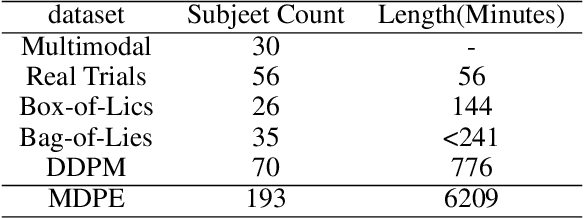


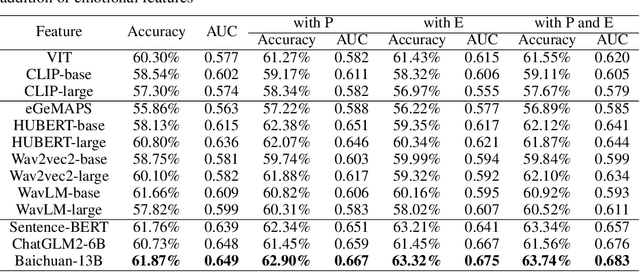
Abstract:Deception detection has garnered increasing attention in recent years due to the significant growth of digital media and heightened ethical and security concerns. It has been extensively studied using multimodal methods, including video, audio, and text. In addition, individual differences in deception production and detection are believed to play a crucial role.Although some studies have utilized individual information such as personality traits to enhance the performance of deception detection, current systems remain limited, partly due to a lack of sufficient datasets for evaluating performance. To address this issue, we introduce a multimodal deception dataset MDPE. Besides deception features, this dataset also includes individual differences information in personality and emotional expression characteristics. It can explore the impact of individual differences on deception behavior. It comprises over 104 hours of deception and emotional videos from 193 subjects. Furthermore, we conducted numerous experiments to provide valuable insights for future deception detection research. MDPE not only supports deception detection, but also provides conditions for tasks such as personality recognition and emotion recognition, and can even study the relationships between them. We believe that MDPE will become a valuable resource for promoting research in the field of affective computing.
An Unsupervised Domain Adaptation Method for Locating Manipulated Region in partially fake Audio
Jul 11, 2024

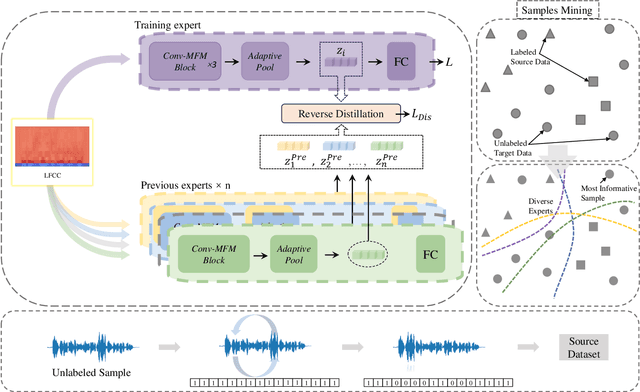

Abstract:When the task of locating manipulation regions in partially-fake audio (PFA) involves cross-domain datasets, the performance of deep learning models drops significantly due to the shift between the source and target domains. To address this issue, existing approaches often employ data augmentation before training. However, they overlook the characteristics in target domain that are absent in source domain. Inspired by the mixture-of-experts model, we propose an unsupervised method named Samples mining with Diversity and Entropy (SDE). Our method first learns from a collection of diverse experts that achieve great performance from different perspectives in the source domain, but with ambiguity on target samples. We leverage these diverse experts to select the most informative samples by calculating their entropy. Furthermore, we introduced a label generation method tailored for these selected samples that are incorporated in the training process in source domain integrating the target domain information. We applied our method to a cross-domain partially fake audio detection dataset, ADD2023Track2. By introducing 10% of unknown samples from the target domain, we achieved an F1 score of 43.84%, which represents a relative increase of 77.2% compared to the second-best method.
ADD 2023: the Second Audio Deepfake Detection Challenge
May 23, 2023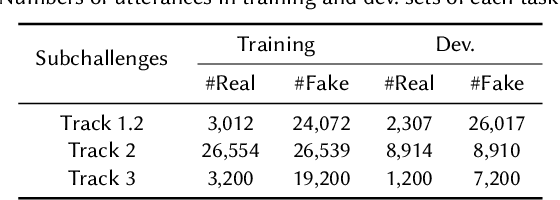
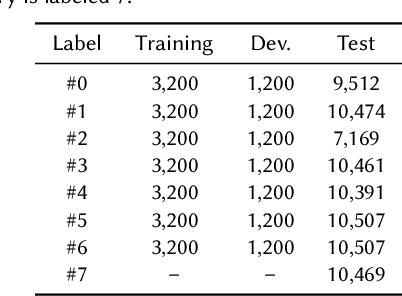
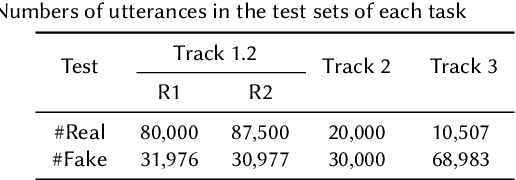
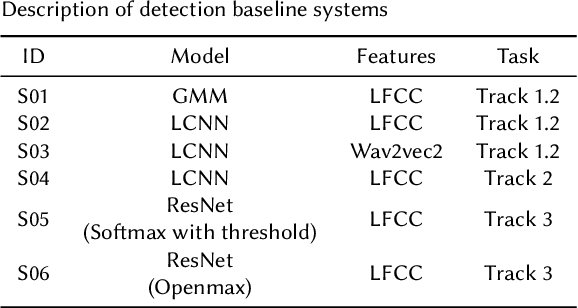
Abstract:Audio deepfake detection is an emerging topic in the artificial intelligence community. The second Audio Deepfake Detection Challenge (ADD 2023) aims to spur researchers around the world to build new innovative technologies that can further accelerate and foster research on detecting and analyzing deepfake speech utterances. Different from previous challenges (e.g. ADD 2022), ADD 2023 focuses on surpassing the constraints of binary real/fake classification, and actually localizing the manipulated intervals in a partially fake speech as well as pinpointing the source responsible for generating any fake audio. Furthermore, ADD 2023 includes more rounds of evaluation for the fake audio game sub-challenge. The ADD 2023 challenge includes three subchallenges: audio fake game (FG), manipulation region location (RL) and deepfake algorithm recognition (AR). This paper describes the datasets, evaluation metrics, and protocols. Some findings are also reported in audio deepfake detection tasks.
ADD 2022: the First Audio Deep Synthesis Detection Challenge
Feb 26, 2022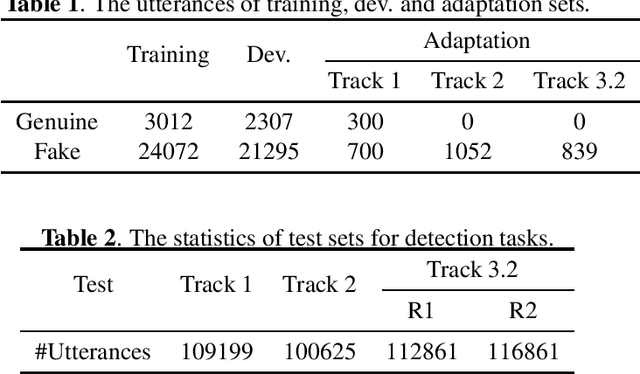
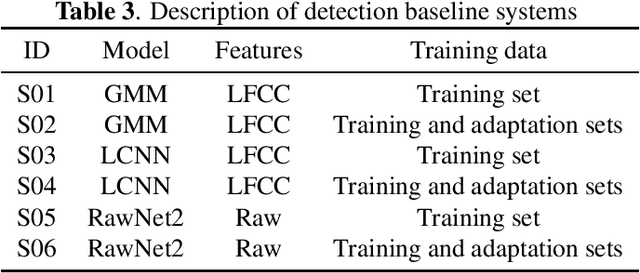
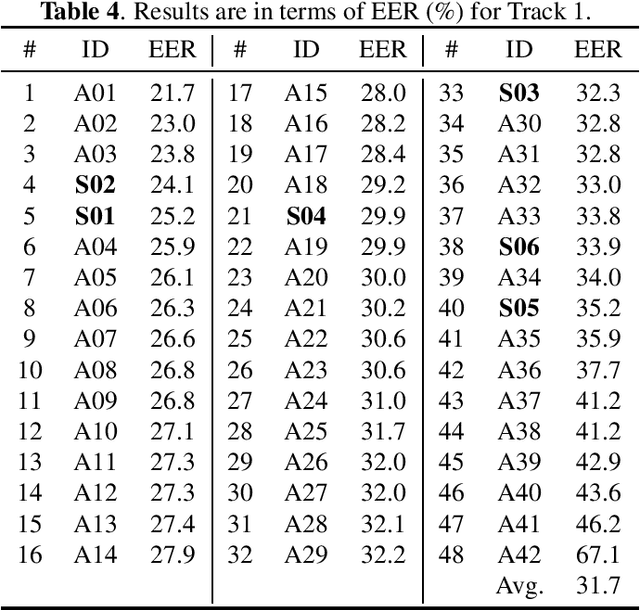
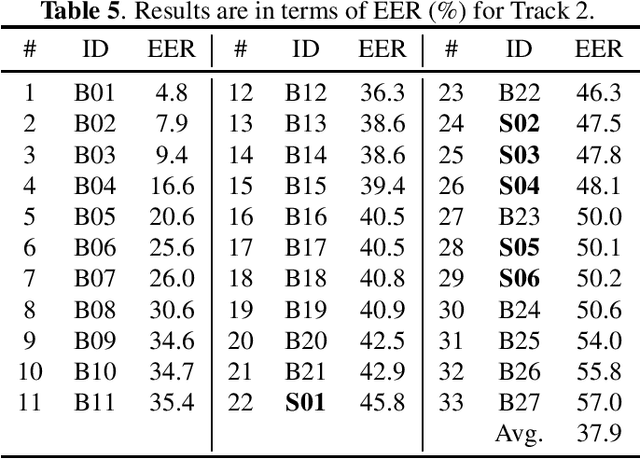
Abstract:Audio deepfake detection is an emerging topic, which was included in the ASVspoof 2021. However, the recent shared tasks have not covered many real-life and challenging scenarios. The first Audio Deep synthesis Detection challenge (ADD) was motivated to fill in the gap. The ADD 2022 includes three tracks: low-quality fake audio detection (LF), partially fake audio detection (PF) and audio fake game (FG). The LF track focuses on dealing with bona fide and fully fake utterances with various real-world noises etc. The PF track aims to distinguish the partially fake audio from the real. The FG track is a rivalry game, which includes two tasks: an audio generation task and an audio fake detection task. In this paper, we describe the datasets, evaluation metrics, and protocols. We also report major findings that reflect the recent advances in audio deepfake detection tasks.
Deep Segment Attentive Embedding for Duration Robust Speaker Verification
Nov 01, 2018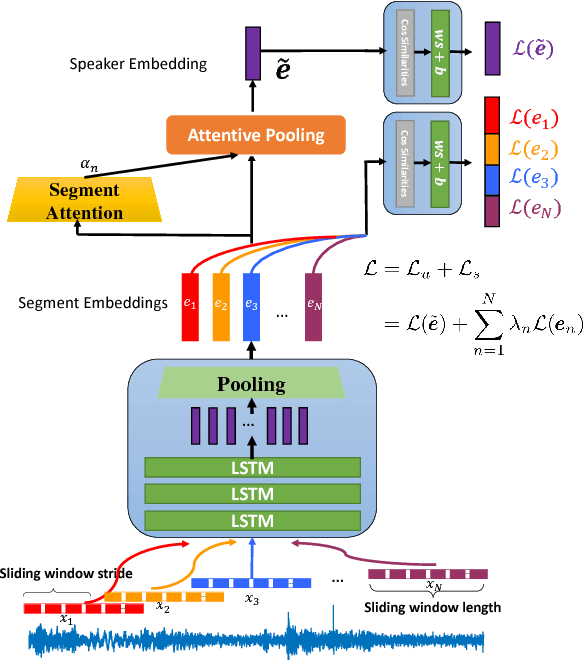
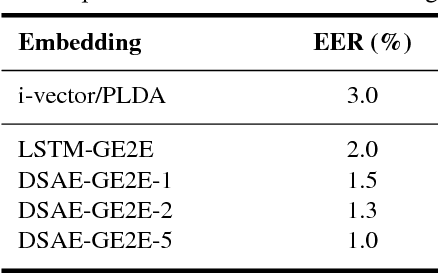
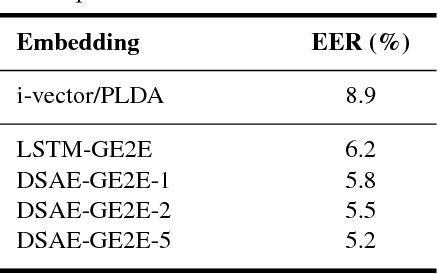
Abstract:LSTM-based speaker verification usually uses a fixed-length local segment randomly truncated from an utterance to learn the utterance-level speaker embedding, while using the average embedding of all segments of a test utterance to verify the speaker, which results in a critical mismatch between testing and training. This mismatch degrades the performance of speaker verification, especially when the durations of training and testing utterances are very different. To alleviate this issue, we propose the deep segment attentive embedding method to learn the unified speaker embeddings for utterances of variable duration. Each utterance is segmented by a sliding window and LSTM is used to extract the embedding of each segment. Instead of only using one local segment, we use the whole utterance to learn the utterance-level embedding by applying an attentive pooling to the embeddings of all segments. Moreover, the similarity loss of segment-level embeddings is introduced to guide the segment attention to focus on the segments with more speaker discriminations, and jointly optimized with the similarity loss of utterance-level embeddings. Systematic experiments on Tongdun and VoxCeleb show that the proposed method significantly improves robustness of duration variant and achieves the relative Equal Error Rate reduction of 50% and 11.54% , respectively.
Boosting Noise Robustness of Acoustic Model via Deep Adversarial Training
May 02, 2018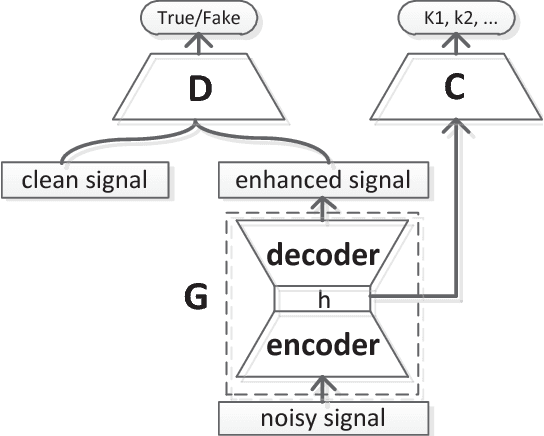

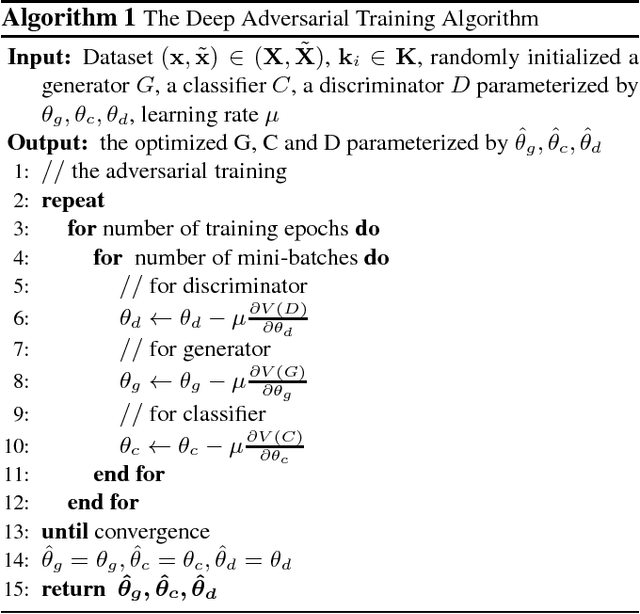
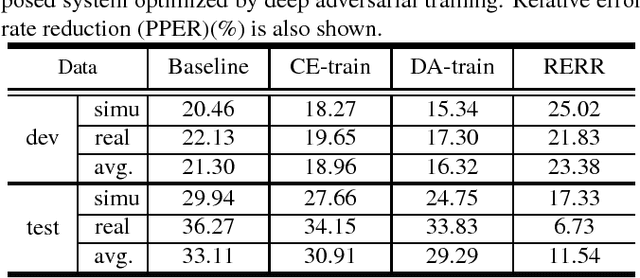
Abstract:In realistic environments, speech is usually interfered by various noise and reverberation, which dramatically degrades the performance of automatic speech recognition (ASR) systems. To alleviate this issue, the commonest way is to use a well-designed speech enhancement approach as the front-end of ASR. However, more complex pipelines, more computations and even higher hardware costs (microphone array) are additionally consumed for this kind of methods. In addition, speech enhancement would result in speech distortions and mismatches to training. In this paper, we propose an adversarial training method to directly boost noise robustness of acoustic model. Specifically, a jointly compositional scheme of generative adversarial net (GAN) and neural network-based acoustic model (AM) is used in the training phase. GAN is used to generate clean feature representations from noisy features by the guidance of a discriminator that tries to distinguish between the true clean signals and generated signals. The joint optimization of generator, discriminator and AM concentrates the strengths of both GAN and AM for speech recognition. Systematic experiments on CHiME-4 show that the proposed method significantly improves the noise robustness of AM and achieves the average relative error rate reduction of 23.38% and 11.54% on the development and test set, respectively.
 Add to Chrome
Add to Chrome Add to Firefox
Add to Firefox Add to Edge
Add to Edge